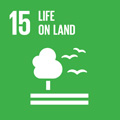- Docente: Fabio Fava
- Credits: 6
- SSD: CHIM/11
- Language: Italian
- Moduli: Fabio Fava (Modulo 1) Elena Biagi (Modulo 2)
- Teaching Mode: Traditional lectures (Modulo 1) Traditional lectures (Modulo 2)
- Campus: Bologna
- Corso: First cycle degree programme (L) in Environmental Engineering (cod. 9198)
-
from Feb 17, 2025 to Apr 04, 2025
-
from Apr 07, 2025 to Jun 13, 2025
Learning outcomes
Students will know the structure and the nomenclature of main chemical organic compounds, and in particular those of priority pollutants in atmosphere, waters and soils; moreover, they will know the mechanisms that rule the reactions among organic compounds and their typical reactivity. Students will also know the main biological constituents of microbial cells of environmental interest, and the basic aspects of their physiology and culturing strategies.
Course contents
Organic Compounds
Introduction to the Organic Chemistry and its relevance for the industry and the environment.
The formulas of organic compounds and their graphical representation.
The classification of organic compounds. The conventional and rational IUPAC nomenclature of organic compounds.
Structure, nomenclature, physical properties, preparation and reactivity of main organic compounds with high environmental impact: aliphatic and aromatic hydrocarbons, and halogenated organic compounds.
The isomerism in organic chemistry: structural isomerism and stereoisomerism; the R, S and E, Z classifications.
Organic reactions and their yealds. The mechanism of organic reactions: General principles and thermodynamic and kinetic aspects. The inductive, steric and resonance effects.
Basics of structure, nomenclature, physical properties, preparation and reactivity of other organic compounds: oxygenated compounds (alcohols, phenols, ethers, aldehydes and ketones, carboxylic acids and their derivatives) and nitrogenated compounds (amines).
MICROBIOLOGY
Structure of living matter: the most important biomolecules, their structure and their role within the cell. Basics of bioenergetics and metabolism.
Enzymes: their function, classification and nomenclature. The mechanism of enzymatic reactions, reaction rate and factors influencing it. Mechanisms of inhibition and regulation of enzymes.
Structure of the prokaryotic and eukaryotic cells: the main subcellular structures and their biological role. Cell replication. Mentions of virology and mycology.
Basics of molecular biology: DNA replication, transcription and translation. The genetic code. Taxonomy and phylogeny.
Nutritional needs of microorganisms and microbial growth. Natural, synthetic, rich and minimal, liquid and solid culture media for cultivating microorganisms of environmental interest. Mixed cultures, co-cultures and pure cultures and biochemical, microbiological and molecular methods for their characterization. Isolation and preservation of microbial cultures. Growth kinetics.
Basics of microbial ecology and introduction to bioremediation.
Readings/Bibliography
Organic Chemistry:
J. McMurray - Fondamenti di Chimica Organica - Ed. Zanichelli, Bologna.
In general, any universitary book dedicated to the organic chemistry subject can be utilized.
Microbiologia:
Madigan MT, Bender KS, Stahl DA, Sattley WM. Brock - Biologia dei microrganismi. Microbiologia generale, ambientale e industriale. Pearson.
Nelson DL, Cox MM. I principi di biochimica di Lehninger. Zanichelli. (o qualunque testo universitario di biochimica)
Teaching methods
the Course consists of 60 hours of class lectures.
Assessment methods
the examination consists in a written test.
the students will be asked to reply to at least four questions, about the topics proposed in the aulas. At least two questions per course section (organic chemistry and microbiology) will be proposed. Each course section can achieve maximum 15 marks. The examination will last 2 hours.
Teaching tools
class lectures will be supported by power point presentations.
Office hours
See the website of Fabio Fava
See the website of Elena Biagi
SDGs


This teaching activity contributes to the achievement of the Sustainable Development Goals of the UN 2030 Agenda.
